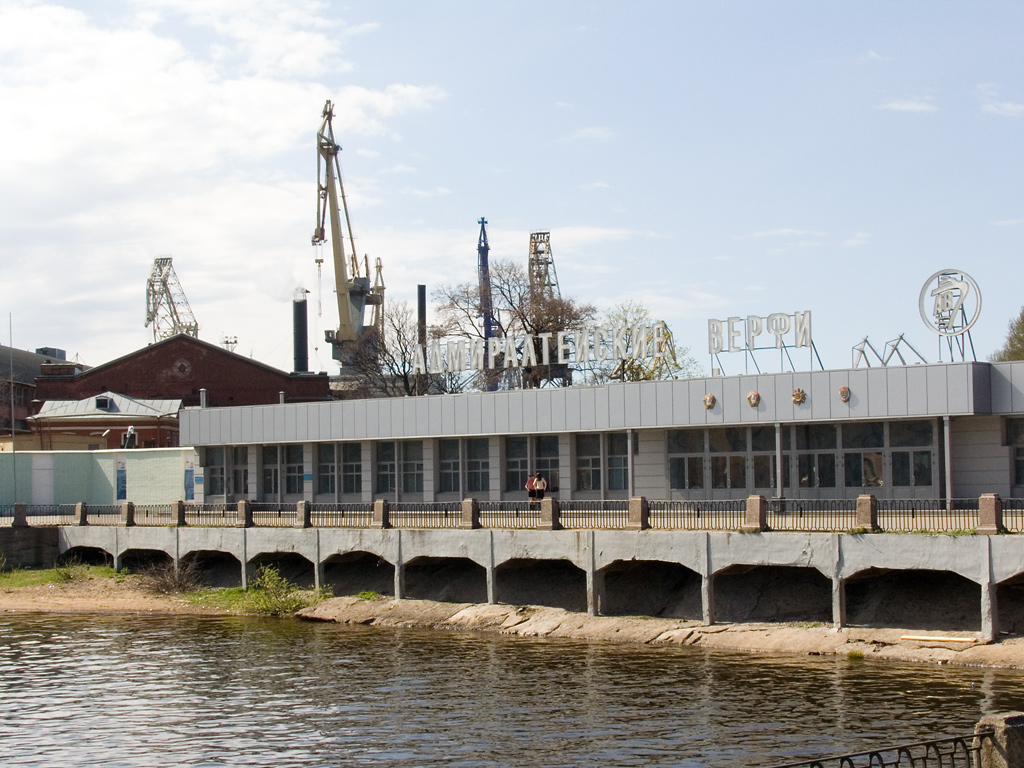
Admiralty Shipyards in St Petersburg, Russia built the Severny Polyus drift station.
“Since it set out from St.Petersburg in early September 2022, the Severny Polyus (“North Pole”) has drifted more than 3,000 nautical miles through the sea-ice from the East Siberian Sea to the Greenland Sea.”
Summary: Russia is using a large drift station called Severney Polyus (North Pole) in the Arctic to gather information.
The Arctic has always been important to Russia[i] and according to the excerpted article from Norway-based The Barents Observer, Russia is conducting Arctic research using a large drift station, the Severny Polyus, or North Pole.[ii] The Severney Polyus is a self-propelled platform vessel that houses 34 scientists, 15 laboratories, and crew on board and is designed to autonomously drift through Arctic sea ice for up to two years. According to Russian Minister of Natural Resources, Aleksandr Kozlov, the data collected from the Severney Polyus will form the basis for “understanding of climate change and climate prognosis, development of climate adaptation measures, they are important for providing security to shipping on the Northern Sea Route.” The article notes that Russia’s new Marine Doctrine includes the use of civilian ships and infrastructure for military purposes, including not only trawlers and icebreakers, but also platforms like the Severney Polyus. The deployment of the Severney Polyus to conduct Arctic research is yet another indication of Russia’s vision of the operational environment in the Arctic region, giving Russia a continued presence in the vital region.
Sources:
Atle Staalesen, “Russia says its North Pole platform is key to understanding climate change,” The Barents Observer (independent Norwegian news site in Russian and English currently blocked in Russia), 23 May 2024. https://thebarentsobserver.com/en/2024/05/russia-says-its-north-pole-platform-key-understanding-climate-change
Since it set out from St.Petersburg in early September 2022, the Severny Polyus (“North Pole”) has drifted more than 3,000 nautical miles through the sea-ice from the East Siberian Sea to the Greenland Sea. On board has been a crew of 16 and a research team of 34. The ship in late April made it out of the ice north of Svalbard and in early May sailed southwards. On the 10th of May it was located to the west of the Ice Fjord at Svalbard and shortly later made it to the waters north of the Bear Island. For unclear reasons, the vessel for several days stayed in the waters of the Bear Island before it proceeded towards Murmansk.
According to Russian Minister of Natural Resources Aleksandr Kozlov, the Severny Polyus offers Russia unique insights into the Arctic. “With the start of the operations of the self-propelled and ice-protected platform Russia has gotten the possibility to undertake long-term scientific experiments on high latitudes,” Kozlov said in a comment delivered in connection with the arrival of the Severny Polyus in Murmansk.
“The researchers have access to 50 types of research work: from meteorology to geophysics, glaciology, seismology and aerology. The data will form the basis for understanding of climate change and climate prognosis, development of climate adaptation measures, they are important for providing security to shipping on the Northern Sea Route.” Kozlov has been Minister of Natural Resources since 2000 and was reappointed in May 2024. He has also been closely engaged in natural resource cooperation with several foreign countries, among them China and North Korea.
…In the course of the 20-month expedition, the geologists took a number of samples from the Arctic seabed. The samples will be used as part of Russia’s efforts to expand its borders on the Arctic shelf, representatives of the expedition say.
The Severny Polyus is designed to be able to autonomously drift through Arctic sea-ice for up to two years. On board are 15 labs where researchers can work year-round. The ship is operated by Russia’s meteorological service Roshydromet…
The research platform has replaced Russia’s Arctic expeditions based on ice floes organized since the 1930s. The quickly vanishing Arctic sea-ice made it increasingly hard to organize the expeditions and the last real ice station, the “North Pole-40”, was held in the winter of 2012.
Albeit built for research purposes, the Severny Polyus could ultimately also be applied by the Russian military. The country’s new Marine Doctrine includes a high stress on use of civilian ships and infrastructure for military purposes. That could include not only trawler and icebreakers, but also the Severniy Polus.“The researchers have access to 50 types of research work: from meteorology to geophysics, glaciology, seismology and aerology. The data will form the basis for understanding of climate change and climate prognosis, development of climate adaptation measures, they are important for providing security to shipping on the Northern Sea Route” Kozlov explained….
Notes:
[i] Russia began exploring the Arctic in the 11th century. Trans-Artic navigation continued into the 16th century during voyages to Spitzbergen-Gruman and Novaya Zemlya. In 1764-1776, Captain Chichagov attempted an expedition across the North Pole to the Pacific Ocean. Chichagov’s attempt failed, but much scientific knowledge on the Arctic waters were gained.
[ii] In 1902, Fritjof Nansen, a famous Norwegian Arctic explorer, proposed the idea of a scientific drifting ice station to chart the Arctic waters. In the 1930s, Soviet scientists conducted studies of the Arctic on drifting ships. In 1937, the Soviets built a drifting ice station, “North Pole 1,” on an Arctic ice floe supported by Soviet aviation, followed by “North Pole 2”and so on until “North Pole 40” was built. North Pole 40 had to be evacuated in 2013 as the ice floe was breaking up.
Image Information:
Image: Admiralty Shipyards in St Petersburg, Russia built the Severny Polyus drift station
Source: https://en.wikipedia.org/wiki/Admiralty_Shipyards – /media/File:Admiralty_Shipyard.jpg
Attribution: CC BY-SA 3.0
